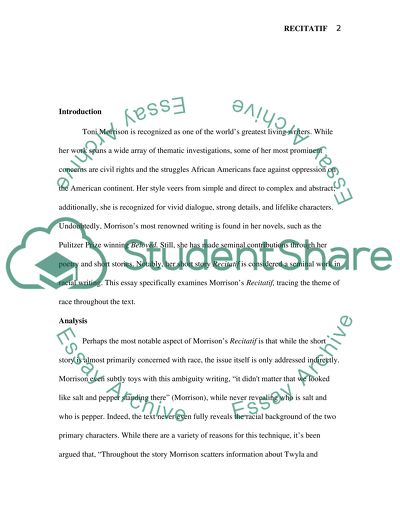Cite this document
(“Toni Morrison's Recitatif Essay Example | Topics and Well Written Essays - 2250 words”, n.d.)
Retrieved from https://studentshare.org/english/1450864-trace-a-common-theme-or-subject-coming-of-age-love
Retrieved from https://studentshare.org/english/1450864-trace-a-common-theme-or-subject-coming-of-age-love
(Toni Morrison'S Recitatif Essay Example | Topics and Well Written Essays - 2250 Words)
https://studentshare.org/english/1450864-trace-a-common-theme-or-subject-coming-of-age-love.
https://studentshare.org/english/1450864-trace-a-common-theme-or-subject-coming-of-age-love.
“Toni Morrison'S Recitatif Essay Example | Topics and Well Written Essays - 2250 Words”, n.d. https://studentshare.org/english/1450864-trace-a-common-theme-or-subject-coming-of-age-love.


